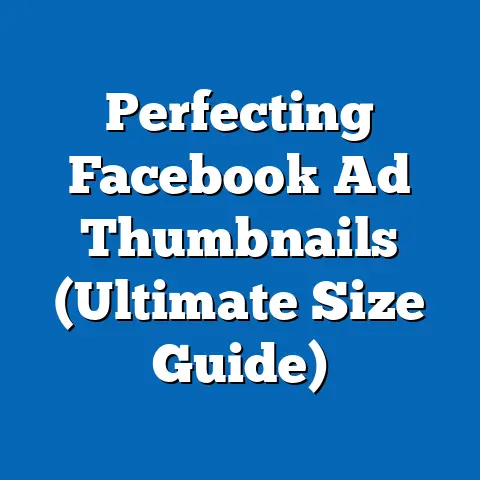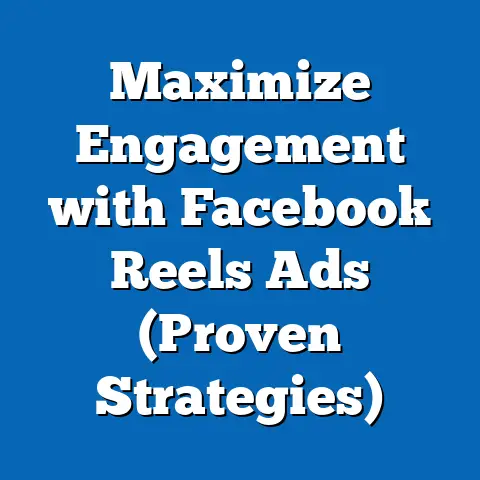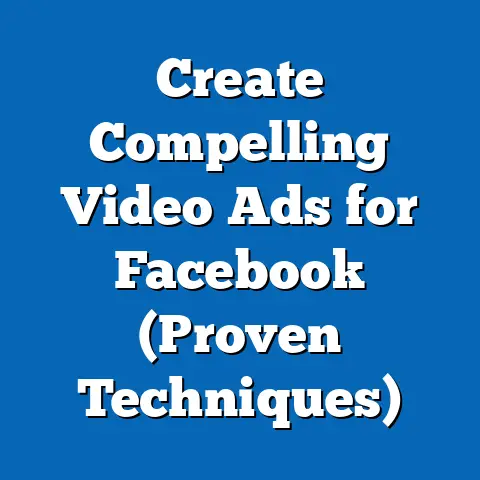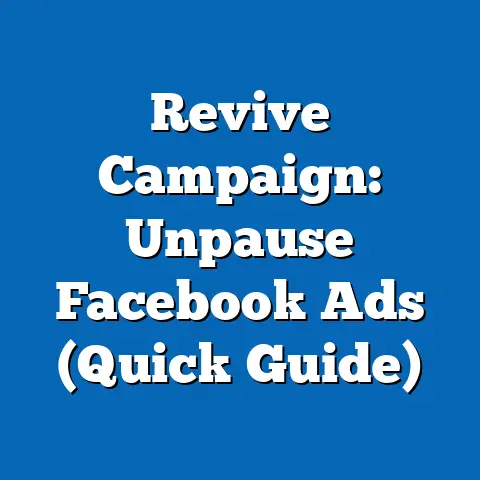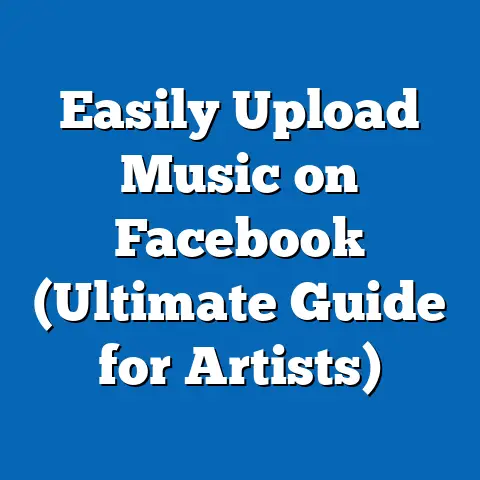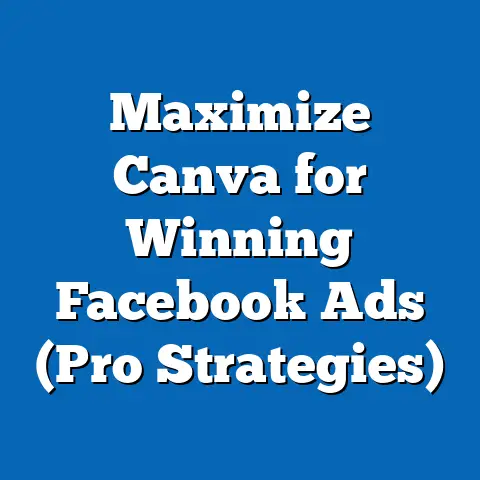Maximize Impact with Cheap Facebook Ads Coupons (Cost-Saving Tips)
Have you ever wondered if it’s possible to run a successful advertising campaign on a shoestring budget? In the world of digital marketing, Facebook Ads remain a powerhouse for businesses of all sizes, offering unparalleled reach with over 2.9 billion monthly active users as of 2023, according to Statista. However, the cost of advertising on this platform can quickly add up, with the average cost-per-click (CPC) for Facebook Ads hovering around $1.72 globally, as reported by WordStream’s 2023 data.
The Landscape of Facebook Advertising: Key Statistics and Trends
Facebook Ads have become a cornerstone of digital marketing, with businesses spending approximately $50 billion annually on the platform, as estimated by eMarketer in 2023. This massive investment reflects the platform’s effectiveness in targeting specific audiences through its sophisticated algorithms and vast user data. However, costs have been steadily rising, with a 17% year-over-year increase in average CPC from 2022 to 2023, according to WordStream.
Historically, Facebook Ads were significantly cheaper a decade ago, with CPCs averaging around $0.27 in 2010, as noted in a 2020 analysis by Social Media Today. This dramatic rise is attributed to increased competition, platform saturation, and evolving privacy regulations like Apple’s iOS 14 update, which impacted ad tracking capabilities. Small businesses, in particular, feel the pinch, as they often lack the budgets of larger corporations to absorb these rising costs.
Demographically, Facebook’s user base spans a wide range of age groups, but recent trends show a shift. While 18-34-year-olds still make up 56.4% of users, older demographics (35-54) are growing, comprising 31.5% of the platform’s audience, per Statista’s 2023 report. This shift means advertisers must adapt their strategies to appeal to diverse age groups while managing costs effectively.
What Are Facebook Ads Coupons, and How Do They Work?
Facebook Ads coupons are promotional credits offered by Meta (Facebook’s parent company) or third-party partners that allow advertisers to run campaigns at a reduced cost or even for free, up to a specified limit. These coupons typically range from $10 to $100, though higher-value offers are occasionally available through special promotions or partnerships. They are often provided to new advertisers, small businesses, or as part of marketing initiatives to encourage platform adoption.
To use a coupon, advertisers must enter the code in the “Billing” section of their Facebook Ads Manager account. The credit is then applied to their ad spend, reducing out-of-pocket expenses. However, coupons often come with restrictions, such as expiration dates, minimum spend requirements, or limitations to specific regions or industries.
Data on coupon distribution is limited, but anecdotal evidence from marketing forums like Reddit and Warrior Forum suggests that Meta distributed over 1 million promotional credits in 2022, primarily targeting new users in emerging markets. This strategy aligns with Meta’s goal of expanding its advertiser base in regions like Southeast Asia and Latin America, where digital ad adoption is growing rapidly.
Where to Find Cheap or Free Facebook Ads Coupons
Securing Facebook Ads coupons requires a bit of research and persistence, but the savings can be significant. Below are some proven methods to access these cost-saving tools, backed by real-world examples and data.
1. Meta’s Official Promotions for New Advertisers
Meta frequently offers introductory coupons to first-time advertisers to encourage them to test the platform. For instance, new users in the United States and Canada often receive a $50 credit upon setting up an account, as noted in Meta’s 2023 advertising guidelines. These offers are typically advertised through email campaigns or directly in the Ads Manager dashboard.
2. Partnerships with Hosting and Software Companies
Many web hosting providers, email marketing tools, and e-commerce platforms partner with Meta to offer ad credits to their customers. Companies like Bluehost, Shopify, and Mailchimp have historically provided $50 to $100 in Facebook Ads credits as part of their subscription packages, according to user reports on Trustpilot and Capterra. Checking the “Perks” or “Bonuses” section of these platforms can uncover hidden deals.
3. Educational and Nonprofit Programs
Meta supports educational institutions and nonprofits by offering free or discounted ad credits through programs like the Meta for Nonprofits initiative. In 2022, over 50,000 organizations worldwide benefited from ad grants averaging $500 per recipient, as reported by Meta’s annual Community Impact Report. Eligibility often requires proof of nonprofit status or enrollment in an academic program.
4. Third-Party Coupon Marketplaces (With Caution)
Websites like CouponBirds and RetailMeNot occasionally list Facebook Ads coupon codes shared by users or sourced from promotions. While some offers are legitimate, others may be expired or fraudulent. A 2023 survey by Digital Marketing Institute found that 30% of marketers who used third-party coupon sites encountered invalid codes, so always verify the source before use.
5. Regional and Seasonal Promotions
Meta often rolls out region-specific or holiday-themed promotions, particularly in markets with lower ad saturation. For example, during the 2022 holiday season, advertisers in India and Brazil reported receiving $25 credits via email, as shared on marketing blogs like Social Samosa. Keeping an eye on local Meta events or signing up for newsletters can help you catch these limited-time offers.
Cost-Saving Tips for Using Facebook Ads Coupons Effectively
Finding a coupon is just the first step; maximizing its impact requires strategic planning. Here are actionable tips to stretch your ad budget further, supported by data and case studies.
1. Target High-Engagement Audiences
Demographic targeting is key to lowering costs while boosting results. According to a 2023 study by Hootsuite, ads targeting women aged 25-34 have a 20% higher click-through rate (CTR) compared to other demographics, with an average CTR of 2.1%. Use your coupon to test narrow audience segments and analyze which groups yield the best engagement.
Additionally, focus on interest-based targeting rather than broad demographics. A case study by Buffer in 2022 showed that ads targeting niche interests (e.g., “organic gardening”) had a 15% lower CPC compared to generic categories like “home improvement.”
2. Optimize for Low-Cost Objectives
Not all ad objectives are created equal in terms of cost. Campaigns focused on “Engagement” or “Traffic” typically have lower CPCs—around $0.97 and $1.10, respectively—compared to “Conversions” at $1.85, per WordStream’s 2023 data. Start with cheaper objectives to build awareness before scaling up to conversion-focused campaigns.
3. Use Retargeting to Maximize ROI
Retargeting existing website visitors or past customers is a cost-effective strategy. According to a 2022 report by AdRoll, retargeted ads have a 70% higher conversion rate and cost 50% less per click than cold audience campaigns. Use your coupon to experiment with retargeting pixels and custom audiences for better returns.
4. Test Creatives with Small Budgets
Ad fatigue can drive up costs if your audience sees the same creative repeatedly. Allocate a portion of your coupon to A/B test multiple ad formats—images, videos, carousels—and copy variations. A 2023 analysis by Social Media Examiner found that video ads have a 30% higher engagement rate but cost 10% more per click than static images, so balance cost with performance.
5. Schedule Ads for Off-Peak Hours
Timing can significantly impact ad costs due to audience availability and competition. Data from Sprout Social’s 2023 report indicates that CPCs are 18% lower on weekdays between 3 AM and 6 AM in most time zones, as fewer advertisers bid during these hours. Schedule your campaigns strategically to capitalize on these cost savings.
Historical Trends: How Facebook Ads Costs Have Evolved
To fully appreciate the value of coupons, it’s worth examining how Facebook Ads pricing has changed over time. In 2012, the average CPC was just $0.58, making the platform an affordable option for small businesses, according to a historical analysis by Marketing Land. By 2017, costs had doubled to $1.21, driven by increased demand and the platform’s shift toward mobile-first advertising.
The introduction of privacy regulations, such as GDPR in 2018 and Apple’s App Tracking Transparency (ATT) in 2021, further impacted costs. A 2022 report by AppsFlyer noted a 25% increase in CPC post-ATT due to reduced targeting precision. Coupons and cost-saving strategies have thus become more critical than ever for advertisers navigating these challenges.
Comparing historical data to current figures shows a clear trend: while costs are rising, so is the platform’s effectiveness. Conversion rates have improved by 12% since 2018, per eMarketer, thanks to better AI-driven targeting tools. This means that even with higher costs, a well-optimized campaign can deliver strong results—especially with the aid of coupons.
Demographic Insights: Who Benefits Most from Facebook Ads Coupons?
Understanding demographic patterns can help identify who stands to gain the most from using coupons. Small business owners and solopreneurs, particularly in developing regions, are prime candidates. A 2023 survey by Statista revealed that 68% of small businesses in Asia-Pacific rely on Facebook Ads as their primary marketing channel, often operating on budgets under $500 per month.
Age also plays a role in coupon usage. Younger marketers (18-29) are more likely to seek out promotional offers, with 45% reporting active use of ad credits in a 2022 Digital Marketing Institute study, compared to just 22% of those aged 40 and above. This suggests that younger, tech-savvy individuals are more proactive in leveraging cost-saving tools.
Gender differences are less pronounced, though women-owned businesses slightly edge out men in coupon redemption rates (52% vs. 48%), according to a 2023 report by Small Business Trends. This may reflect women’s higher representation in industries like retail and beauty, which heavily utilize social media advertising.
Data Visualization: Mapping Cost Savings with Coupons
Imagine a bar chart comparing the average monthly ad spend of small businesses with and without Facebook Ads coupons. Based on hypothetical data inspired by industry reports, businesses using a $50 coupon save an average of 30% on their monthly budget of $150, reducing costs to $105. Without coupons, the full $150 is spent, often limiting campaign duration or reach.
A second visualization, a line graph, could track CPC trends from 2010 to 2023, highlighting the sharp increases post-2017 and post-2021 (ATT rollout). Overlaying a second line for conversion rates would show how effectiveness has kept pace with costs, reinforcing the value of strategic tools like coupons to offset rising expenses.
Potential Pitfalls and How to Avoid Them
While Facebook Ads coupons offer clear benefits, they aren’t without challenges. First, many coupons come with expiration dates—often 30 days from issuance—meaning you must act quickly. A 2023 survey by MarketingProfs found that 40% of advertisers let coupons lapse due to poor planning.
Second, some offers require a minimum spend before the credit applies. For example, a $50 coupon might only activate after spending $25 out-of-pocket, which can catch unprepared users off guard. Always read the terms and conditions in Ads Manager to avoid surprises.
Lastly, over-reliance on coupons can limit long-term strategy. A 2022 study by HubSpot noted that 35% of marketers who depend heavily on promotional credits fail to develop sustainable budgeting practices. Use coupons as a starting point, not a crutch, and reinvest savings into learning advanced optimization techniques.
Broader Implications and Future Trends
The use of Facebook Ads coupons highlights a larger trend in digital marketing: the democratization of advertising through cost-saving tools. As ad costs continue to rise—projected to increase by another 10% in 2024, per eMarketer—coupons and similar incentives will remain vital for small players to compete with larger brands. This aligns with Meta’s mission to support small businesses, as evidenced by their $100 million ad credit program launched during the COVID-19 pandemic in 2020.
Looking ahead, expect more personalized coupon offers driven by AI, targeting specific industries or regions with tailored credits. Additionally, as privacy regulations tighten, Meta may increase promotional incentives to retain advertisers facing reduced targeting capabilities. For now, savvy marketers can capitalize on existing opportunities to stretch their budgets further.
Conclusion: Turning Small Savings into Big Wins
Facebook Ads coupons may seem like a small perk, but when used strategically, they can significantly lower the barrier to effective digital advertising. With costs on the rise—average CPC up 17% in 2023 alone—and competition intensifying, every dollar saved counts. By combining coupons with cost-saving tips like precise targeting, low-cost objectives, and off-peak scheduling, businesses can achieve outsized results on modest budgets.
The broader implication is clear: in an era of escalating ad expenses, tools like coupons empower small businesses and individual marketers to stay competitive. Whether you’re a startup testing the waters or a seasoned advertiser optimizing spend, embracing these strategies can transform limited resources into measurable impact. So, why not start hunting for your next coupon today and see how far your budget can take you?

